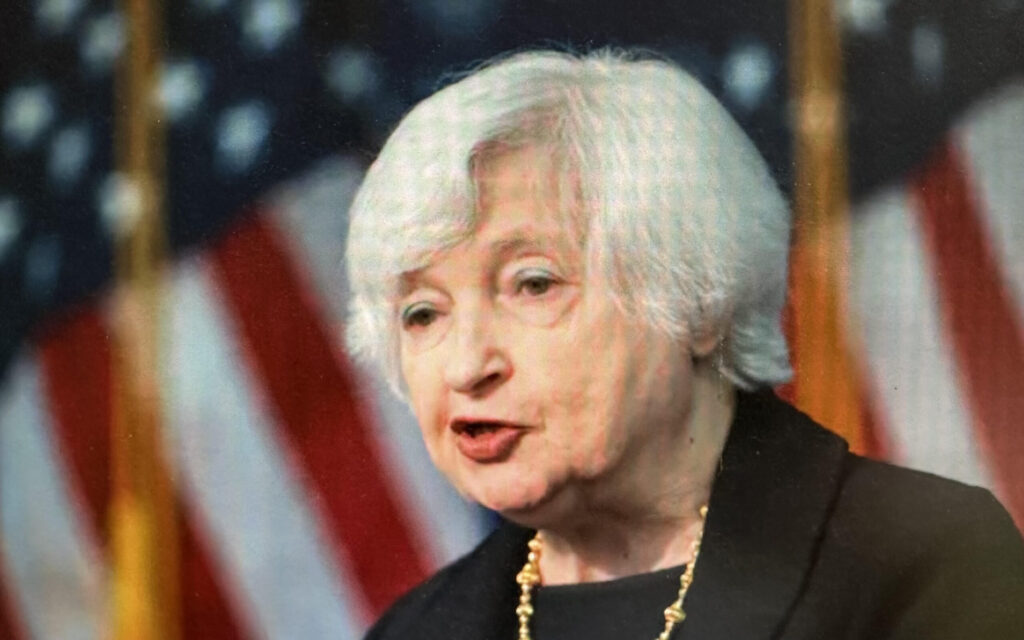
President Biden and Treasury Secretary Yellen seem to be playing a reckless game of chicken on the debt ceiling. Yellen has repeatedly said June 1 is the X date, while also saying she is not making other plans in case a deal is not reached. Yet, Uncle Sam has already reached the functional X Date – an unworkably low cash balance.
Wednesday, there was just $49 billion in the Treasury General Account (TGA), after $25 billion came out to pay regular weekly Social Security benefits, as it does every Wednesday. A year ago, there was $819 billion in the TGA.
With less than a week to go, including another Wednesday, there is no debt ceiling agreement in place. It would seem prudent to be discussing a Plan B or some insurance policy against default — even if, as seems to be the case, most bystanders believe that a deal will be reached in time. In the past, a deal has always materialized in time. Yet, a Treasury Secretary should not proceed on hope or belief, but should have a plan.
Of all the foolish talk about the fantastical one-trillion-dollar platinum coin and invoking the 14th Amendment and what would be incredibly disruptive prioritization, there is one option that would work, premium bonds.
Premium bonds are bonds with a face interest rate far above current market rates, which, therefore, can be sold far above face value, i.e. at a premium. The amount above face value is not considered borrowing, so it would be spendable cash.
Yet the face value is debt and would push debt over the ceiling, unless the premium bonds are sold in replacement of bonds that are maturing. There are $149 billion of Treasury notes and bonds maturing on May 31, but none thereafter until June 15. Replacing these bonds with premium bonds could generate a cash trove.
A 30-year bond could be sold with a 10 percent coupon interest rate at a price of 180 percent of face value and, at that premium price, offer the buyer a 4 percent yield to maturity, slightly above the current yield on 30-year Treasury bonds.
The 80 percent premium would produce $119 billion of non-borrowed spendable cash, which, likely, could bridge the federal government to June 15 when Treasury receives a large inflow of corporate and estimated individual income tax payments.
It would be extremely negligent not to have an insurance policy, and this one might work, though only if it is executed on May 31. After that date, there are no notes or bonds maturing before June 15, according to the Treasury’s Monthly Statement of the Public Debt. It would not be logistically doable to issue premium bonds to replace maturing Treasury Bills.
Ms. Yellen (and others) may not want to speak publicly about this option for fear of uncertain impact upon the negotiations between President Biden and Speaker McCarthy or for fear of looking foolish and panicky.
Maybe there is some other option among the various “extraordinary measures” that Treasury can employ. Treasury has not updated its disclosure about these measures since describing them and their potential use in a memo issued in January when we hit the current debt ceiling.
If Mrs. Yellen has been straightforward in saying that June 1 is the likely “X Date,” meaning that all available “extraordinary measures” will have been taken, then all that will remain absent a deal — and issue of premium bonds — is prioritization, which would be disruptive.
Uncle Sam usually runs a large cash flow deficit in the first two weeks of June. Last year, the Treasury General Account took in $203 billion of deposits and had $323 billion of withdrawals before “public debt issues and redemptions.”
After using deposits first for Social Security benefit payments, which are generally considered almost as inviolable as debt service, remaining deposits were $157 billion against remaining withdrawals of $277 billion. That would have meant leaving $120 billion of bills unpaid in the first two weeks of June last year.
That $120 billion void suggests just how fraught the first half of June this year would be, even after adding back $43 billion of Coronavirus relief spending last year in early June that will not repeat this year.
This fiscal year to date, Medicare and Medicaid payments are averaging $64 billion on a half-monthly basis — and spiked to $97 billion in the first two weeks of this May. That would leave about $14 billion for everything else. What if something else spiked?
Maybe there is a much better cash flow outlook this June. If so, Yellen should say so. If not, then, that’s all the more reason to craft a Plan B. Maybe there are problems with issuing premium bonds that are not readily apparent; if so, she should explain what they are.
Certainly, issuing premium bonds would be embarrassing for Mr. Biden and the Democrats. It would dramatize the reality, and the GOP position, that the rapid growth of spending and the national debt is unsustainable.
Premium bonds would dramatize the generational theft involved in deficit spending, where money is borrowed and spent today, leaving future generations saddled with both interest payments and repayment at maturity — in this case, interest at more than twice the normal rate.
Yet, default would be far worse for Biden & Company, not to mention, a disaster for the nation.
![]()
Red Jahncke is a nationally recognized columnist, who writes about politics and policy. His columns appear in numerous national publications, such as The Wall Street Journal, Bloomberg, USA Today, The Hill, Issues & Insights and National Review as well as many Connecticut newspapers.


